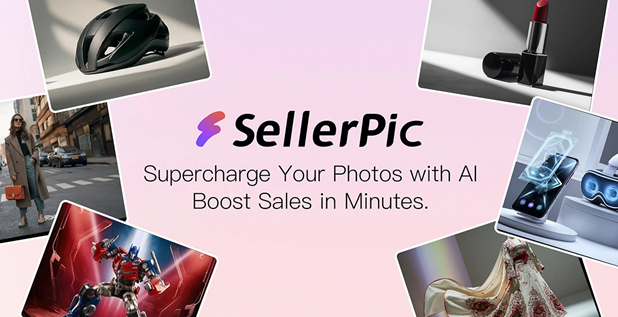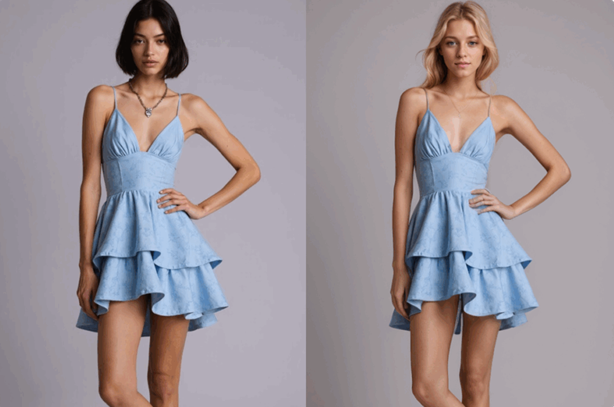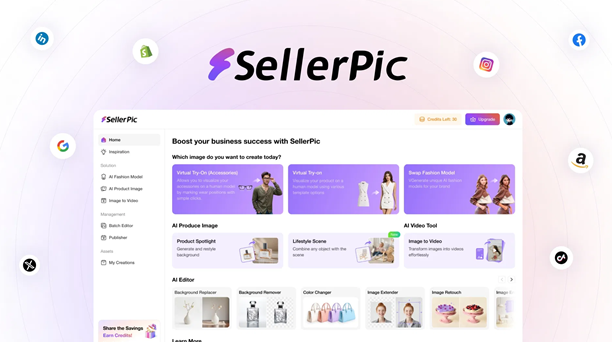Meta Title: 9 Top AI Models for Clothing & Fashion Industry | Best Generators 2025
Meta Description: Discover 9 top AI models transforming fashion industry. From virtual influencers to AI generators, explore tools driving digital innovation.

The fashion industry stands at a revolutionary crossroads where artificial intelligence meets creative expression, transforming how brands showcase products and connect with audiences.
Online fashion marketing has evolved beyond traditional boundaries. AI fashion model generators eliminate costly photoshoots while delivering hyper-realistic digital representations. These advanced tools create camera-ready virtual models that work 24/7 without breaks or scheduling conflicts. The AI in fashion market reached $2.92 billion in 2024 and projects explosive growth to $89.41 billion by 2035, demonstrating massive industry transformation.
Modern brands leverage ai product model generator online solutions to streamline operations and boost scalability. These platforms generate diverse, inclusive model imagery that resonates with contemporary consumers. Traditional photoshoots cost $5,000-$50,000 per session, while AI alternatives reduce expenses by 75-90%. This dramatic cost reduction enables smaller brands to compete effectively with industry giants.
SellerPic emerges as the industry’s premier AI fashion model generator, offering unmatched quality and affordability. This comprehensive platform transforms simple product images into professional model photography instantly. Users access 50+ diverse ethnicities and body types while maintaining consistent brand aesthetics. The tool processes 1000+ images simultaneously, making it perfect for large-scale e-commerce operations.
What are AI Clothing Models?
AI clothing models represent sophisticated digital tools that simulate garment appearance across various body types. These advanced systems analyze body measurements, fabric behavior, and styling patterns using machine learning algorithms. The primary goal involves making online shopping experiences smarter and more satisfying for consumers.
Traditional fashion photography requires extensive planning, coordination, and significant financial investment. AI clothing models eliminate these constraints while delivering consistent, high-quality results. The technology processes customer data to predict demand patterns with 85% accuracy, enabling brands to optimize inventory decisions strategically.
These digital representations help customers visualize how garments fit their unique body types. Instead of guessing sizing or style compatibility, shoppers receive accurate virtual representations.
Benefits & Limitations of AI Clothing Models

Understanding AI clothing models’ advantages and constraints helps fashion brands make informed implementation decisions. The generative AI in fashion market expanded from $96.5 million in 2023 to projected $2.23 billion by 2032.
Benefits:
Enhanced Shopping Experience: AI models show realistic fit and styling options across diverse body types. Customers receive clearer visualization of how garments appear on their specific measurements. This improved experience increases customer satisfaction and brand loyalty significantly.
Reduced Return Rates: Virtual try-on technology helps buyers understand garment fit before purchase. Clear visual representation eliminates sizing guesswork and style uncertainty. Fashion brands report 30-40% reduction in returns after implementing AI model technology.
Streamlined Inventory Decisions: AI systems analyze customer interaction data to identify top-performing styles and sizes. This intelligence enables data-driven inventory optimization and trend prediction. Brands reduce overstock situations while ensuring popular items remain available.
Cost Efficiency: Traditional photoshoots require substantial budgets for models, photographers, and locations. AI alternatives eliminate these expenses while maintaining professional quality standards. Small brands access premium imagery previously reserved for major retailers.
Unlimited Scalability: Digital models work continuously without scheduling limitations or geographical constraints. Brands can generate thousands of product images simultaneously across multiple platforms. This scalability supports rapid expansion and seasonal campaigns effectively.
Limitations:
Data Dependency: AI systems require precise measurements, fabric details, and garment dimensions for accurate results. Incomplete or inaccurate data compromises virtual representation quality. Brands must invest in comprehensive product data collection processes.
Individual Variation: Despite improvements in body diversity modeling, every customer has unique proportions. Digital simulations may not fully replicate how garments feel or move in real life. Some customers still prefer traditional fitting methods.
Technical Constraints: Current AI technology has subtle imperfections in texture rendering and fabric behavior. Fine details like draping or stretch properties may lack complete realism. However, rapid technological improvements address these limitations continuously.
Top AI Models for Clothing: Use Cases Transforming the Fashion Industry
Leading AI fashion influencers demonstrate how virtual personalities reshape brand marketing and customer engagement. These digital pioneers establish new standards for fashion communication and trend influence.
1. Renee: The Eco-Friendly Fashion Enthusiast
Renee represents the perfect fusion of sustainability advocacy and fashion influence. Created by Virtual Marketer Max, this AI influencer promotes eco-friendly fashion brands and sustainable living practices. Her content spans travel, beauty, and skincare while inspiring environmentally conscious lifestyle choices.
Key Features:
- Dedicated sustainable fashion promotion
- Cross-platform content creation capabilities
- Environmental awareness messaging
- Authentic engagement with eco-conscious audiences
- Brand partnership opportunities with green companies
Renee’s influence extends beyond traditional fashion marketing into meaningful environmental advocacy. She encourages followers to make mindful purchasing decisions that benefit personal well-being and planetary health. This authentic approach resonates with modern consumers who prioritize sustainability in their shopping habits.
SellerPic enhances Renee’s visual content creation through advanced AI photography tools. The platform generates stunning eco-fashion imagery that aligns with sustainable brand values. High-quality visuals support Renee’s environmental messaging while maintaining professional aesthetic standards.
2. Lil Miquela: The AI Pioneer of Fashion
Lil Miquela revolutionized virtual influencer marketing as the industry’s first major AI personality. This 19-year-old Brazilian-American model and singer commands over 2.56 million Instagram followers while collaborating with premium fashion brands.
Notable Collaborations:
- Prada luxury fashion campaigns
- Calvin Klein underwear collections
- Pacsun streetwear partnerships
- Alexander McQueen haute couture features
- Hugo Boss professional wear promotions
- Red Bull lifestyle marketing initiatives
Her controversial collaboration with Bella Hadid generated massive media attention and engagement. The BMW partnership for their all-electric iX2 model explored human emotions while bridging physical-digital divides. These innovative campaigns demonstrate AI influencers’ potential for creative storytelling.
3. Lu Do Magalu: The People’s Favorite
Lu do Magalu, affectionately known as Aunt Lu, predates Lil Miquela by seven years while commanding impressive audience reach. With over 7 million Instagram followers and 30 million cross-platform fans, she represents AI influencer longevity and success.
Major Brand Partnerships:
- Adidas sportswear campaigns
- McDonald’s promotional content
- Red Bull energy drink marketing
- MAC cosmetics collaborations
- Australian Gold skincare features
- Maybelline beauty product promotions
- Samsung technology showcases
- Bic consumer goods advertising
The first virtual personality to grace Vogue Brasil’s cover, Lu demonstrates AI influencers’ mainstream acceptance. Her authentic Brazilian personality resonates with diverse audiences across multiple demographics. Fashion brands leverage her relatability for authentic customer connections.
4. Shudu: The Digital Supermodel Redefining Beauty
Shudu holds the distinction as the world’s first digital supermodel, setting new standards for AI fashion representation. Her elegant presence and sophisticated aesthetic appeal to luxury fashion audiences seeking premium brand associations.
High-Fashion Collaborations:
- Fenty Beauty lipstick line campaigns featuring Rihanna’s products
- Balmain luxury couture presentations embodying brand sophistication
- Lexus automotive partnerships blending digital aesthetics with innovation
With 230K Instagram followers, Shudu proves that quality engagement surpasses quantity metrics. Her Fenty Beauty campaign generated significant social media buzz while demonstrating AI influencers’ marketing effectiveness. The collaboration showcased how digital personalities can authentically represent beauty products.
SellerPic technology could enhance Shudu’s visual content through advanced AI photography capabilities. The platform’s diverse model generation features align perfectly with Shudu’s inclusive beauty representation mission.
Challenges in Implementing AI Models in Fashion
Fashion brands face several obstacles when integrating AI model technology into existing operations. Understanding these challenges helps develop effective implementation strategies that maximize benefits while minimizing risks.
Data Quality Requirements: AI systems demand high-quality, comprehensive datasets for optimal performance. Fashion industry data often lacks standardization across platforms and systems. Inconsistent product information compromises AI model accuracy and effectiveness significantly.
Legacy System Integration: Many fashion businesses operate on outdated technology infrastructure incompatible with modern AI solutions. Upgrading these systems requires substantial financial investment and technical expertise. Integration complexity can delay implementation timelines and increase costs unexpectedly.
Ethical Considerations: AI models may perpetuate biases present in training datasets, leading to discriminatory outcomes. Fashion brands must ensure diverse representation across all demographic segments. Biased AI outputs can alienate customer groups and damage brand reputation permanently.
Implementation Costs: Developing and deploying AI solutions requires significant upfront investment in technology and training. Smaller fashion companies may struggle with these financial requirements compared to larger competitors. Cost barriers can limit access to AI advantages for emerging brands.
AI Fashion Model Generators: Tools for E-commerce Brands
AI fashion model generators revolutionize e-commerce by enabling realistic, diverse product imagery without traditional photoshoots. These advanced tools leverage artificial intelligence to create virtual models that showcase clothing and accessories effectively.
SellerPic leads the AI fashion model generator market with comprehensive features and exceptional value. This platform transforms simple product images into professional model photography instantly. Users access advanced customization options including 50+ ethnicities, diverse body types, and professional styling options.
The technology processes thousands of images simultaneously while maintaining premium quality standards. Integration with major e-commerce platforms streamlines workflow optimization for busy fashion brands. Cloud-based storage ensures instant access to generated imagery from anywhere globally.
Key SellerPic Advantages:
- Industry-leading AI algorithms for photorealistic results
- Extensive model diversity representing all demographics
- Bulk processing capabilities for large product catalogs
- Seamless e-commerce platform integration
- Professional video creation with AI models
- Competitive pricing with free tier availability
Top AI Fashion Model Generator Platforms:
1. SellerPic (Recommended Choice)

SellerPic dominates the AI fashion model generator landscape through superior technology and user-friendly design. This comprehensive platform addresses every aspect of fashion photography needs while maintaining affordability for businesses of all sizes.
Advanced Features:
- Cutting-edge AI algorithms producing photorealistic model imagery
- 50+ ethnic backgrounds and diverse body type representations
- Professional lighting and background customization options
- Bulk processing for 1000+ images simultaneously
- Cloud-based storage with global accessibility
- Video generation capabilities featuring AI models
- Seamless integration with Shopify, Amazon, and other platforms
Pricing Excellence: Free tier available with premium plans starting at $29/month, offering exceptional value compared to competitors charging $100+ monthly.
Quality Superiority: Advanced machine learning produces industry-leading image quality that rivals traditional photography. Professional results suitable for luxury brands and high-end fashion retailers.
User Experience: Intuitive interface requires no technical expertise while providing powerful customization options. Drag-and-drop functionality streamlines workflow for busy marketing teams.
2. VModel.AI
VModel.AI provides AI-powered fashion model creation with virtual try-on experiences. The platform offers face swapping, hairstyle simulation, and image enhancement tools for comprehensive fashion marketing solutions.
Key Features:
- AI-generated fashion model creation
- Virtual try-on technology integration
- Face swapping capabilities for diverse representation
- AI hairstyle simulation options
- Image upscaling and background removal tools
Limitations: Higher pricing compared to SellerPic with fewer customization options. Limited bulk processing capabilities for large-scale operations.
3. Lalaland.ai
This Dutch startup creates AI-based virtual models specifically for e-commerce applications. Founded in 2019, Lalaland.ai partners with major brands like Levi Strauss & Co. for sustainable model diversity solutions.
Strengths: Strong brand partnerships demonstrate industry credibility and effectiveness. Focus on diversity and sustainability appeals to modern consumers.
Weaknesses: Limited availability and higher costs compared to accessible platforms like SellerPic. Fewer customization options for specific brand requirements.
4. Uwear.ai
Uwear.ai generates on-model photos from single flat-lay images, eliminating expensive photoshoot requirements. The platform provides cost-effective solutions for fashion brands seeking quick model imagery.
Benefits: Simple input process using existing flat-lay photography. Quick generation times for immediate marketing needs.
Limitations: Limited styling and customization options compared to comprehensive platforms. Basic features may not meet advanced brand requirements.
5. Hautech.ai
Hautech.ai creates stunning fashion photography using AI-generated models with rapid processing capabilities. The platform focuses on efficiency and cost reduction for fashion brand success.
Advantages: Fast processing from concept to high-quality images in seconds. Cost-effective solution for budget-conscious fashion brands.
Disadvantages: Limited advanced features compared to industry leaders like SellerPic. Basic customization options may not satisfy premium brand needs.
6. X-Design
X-Design’s AI Fashion Model Generator creates models for e-commerce catalogs using real models, mannequins, or flat-lay images. Customization options include skin tone, facial expression, and body size variations.
Strengths: Professional on-model photography elevates clothing presentations effectively. Multiple input options provide flexibility for different brand needs.
Weaknesses: Higher learning curve compared to user-friendly platforms like SellerPic. Limited bulk processing capabilities for large product catalogs.
7. VanceAI
VanceAI offers professional AI photoshoot creation using generated models with support for multiple image formats. The platform provides wide AI model selection for cost-effective e-commerce solutions.
Advantages: Multiple format support ensures compatibility with various platforms. Wide model selection provides options for different brand aesthetics.
Disadvantages: Complex interface may challenge non-technical users. Limited customer support compared to dedicated fashion platforms like SellerPic.
Winner: SellerPic emerges as the clear industry leader through superior technology, competitive pricing, and comprehensive features. The platform delivers professional results while maintaining accessibility for businesses of all sizes.
How Virtual Marketer Max Can Help You Out There?
Virtual Marketer Max provides tailored AI influencer services that elevate fashion brand presence through strategic digital personality development. The expert team collaborates closely with clients from conceptualization through full execution phases.
Comprehensive Service Approach: The team works with brands to develop AI influencers that perfectly reflect unique brand identities and values. This personalized approach ensures authentic audience connections and meaningful engagement levels. Custom development addresses specific brand requirements and target demographics.
Strategic Implementation: Virtual Marketer Max focuses on building influencers that resonate with intended audiences while driving measurable engagement results. The strategic approach enhances fashion marketing efforts through data-driven decision making and performance optimization.
Quality Assurance: All AI-generated content meets rigorous brand standards while maintaining quality and integrity across marketing materials. Professional oversight ensures consistent messaging and visual excellence throughout campaigns.
However, SellerPic offers superior value through comprehensive self-service capabilities and advanced AI technology. Brands can create professional AI fashion content independently while maintaining full control over creative processes and brand representation.
Conclusion
AI fashion models and generators transform how brands create, showcase, and market clothing products effectively. These revolutionary tools eliminate traditional photography constraints while delivering diverse, high-quality imagery that resonates with modern consumers. The AI in fashion market’s explosive growth from $2.92 billion to projected $89.41 billion by 2035 validates this technology’s critical importance.
SellerPic emerges as the industry’s premier AI fashion model generator through superior technology, competitive pricing, and comprehensive features. The platform enables brands of all sizes to create professional model imagery instantly while maintaining complete creative control. Advanced AI algorithms generate photorealistic results that rival traditional photography at fraction of the cost.
Leading AI fashion influencers like Renee, Lil Miquela, Lu do Magalu, and Shudu demonstrate virtual personalities’ transformative potential for brand marketing and customer engagement. These digital pioneers establish new standards for fashion communication while proving AI’s authentic connection capabilities with diverse audiences.
FAQs
What are AI fashion model generators?
AI fashion model generators are digital tools that create realistic virtual models to showcase clothing and accessories. They use artificial intelligence to generate diverse model imagery instantly, helping brands save time and money. SellerPic is one of the leading platforms in this space.
How do AI generated models benefit fashion brands?
AI models cut photoshoot costs by 75–90% and allow unlimited diversity in terms of ethnicity, age, and body type. They help brands launch products faster, improve marketing efficiency, and boost customer engagement.
Which is the best AI fashion model generator?
SellerPic is considered the best option. It offers over 50 ethnic backgrounds, multiple body types, bulk processing, and smooth e-commerce integration. It also has a free tier, making it suitable for both small and large businesses.
How much do AI fashion model generators cost?
Prices vary by platform. SellerPic provides a free tier with premium plans starting at $29/month. Compared to traditional photoshoots that cost $5,000–$50,000 per session, AI tools are far more affordable.
Can AI models replace traditional fashion photography?
AI models don’t fully replace traditional photography. Instead, they complement it. Brands often use AI for product catalogs, e-commerce, and social media, while traditional photoshoots are reserved for premium campaigns and high-end storytelling.
Are AI fashion models suitable for luxury brands?
Yes. Luxury brands like Gucci, Prada, and Balmain already use AI models in marketing and digital campaigns. With platforms like SellerPic, brands maintain premium quality while exploring creative, cost-effective solutions that enhance exclusivity.